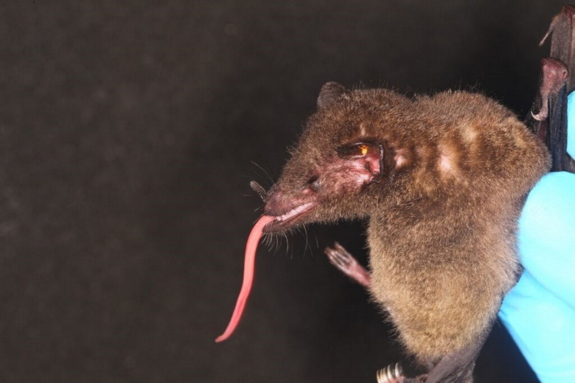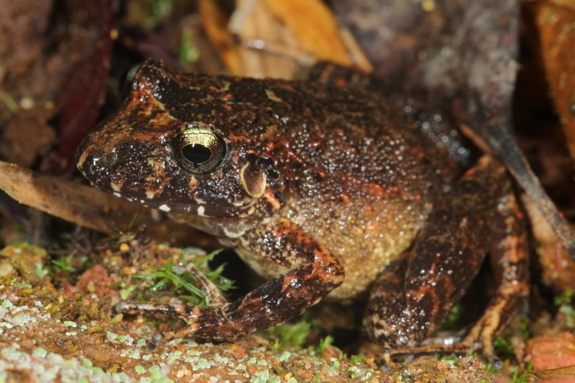
(above) Meet the bizarre tube-lipped nectar bat. (Mileniusz Spanowicz)
Bat with record-breaking tongue found in the Bolivian jungle
August 21, 2015 - Washington Post
By Rachel Feltman
The tube-lipped nectar bat isn't a new species -- it was discovered in 2005. But since its discovery in Ecuador, the bat -- which, with a tongue 150 percent the size of its body, breaks the record for the longest relative tongue on a mammal -- has only been found a handful of times.
And now the bat has been identified in a new location: Bolivia's Madidi National Park. The little guy with the big tongue was found as part of a program called Identidad Madidi, an 18-month-long expedition to uncover new species in what's thought to be one of the most biodiverse national parks in the world.
While the tube-lipped nectar bat (which has a tongue that starts in its rib cage!) isn't totally new, scientists -- who only started the expedition in June -- have already found nearly 500 species of vertebrates, including 60 that were previously unknown to live within the park.
In fact, scientists with the project now believe that they managed to find a new species of frog during their very first week of searching.
(below) Genetic tests will confirm whether this frog is unknown to science. (Mileniusz Spanowicz)

They believe the frog is an unknown species of the family Craugastoridae, perhaps in the group commonly referred to as Robber frogs.
"Robber frogs are small to medium-sized frogs distributed in the Andes and Amazon region and to date there are 23 known species. As soon as we saw these frogs' distinctive orange inner thighs, it aroused our suspicions about a possible new species, especially because this habitat has never really been studied in detail before Identidad Madidi," expedition herpetologist James Aparicio said in a statement.
Aparicio and his colleagues can't officially name the frog as a new species just yet, since they'll need to do extensive genetic testing to confirm that it's dissimilar enough to previously described robber frogs. But after pouring through literature on similar frogs from Bolivia and Peru, the team is confident that the genetic results will confirm their suspicions.
Three catfish, a lizard, and a second frog are also being considered as possible new species.
This first leg of the expedition has only explored two sites in the park, which spans over 7,300 square miles. In the coming year, researchers will visit another dozen sites to uncover even more unknown species.